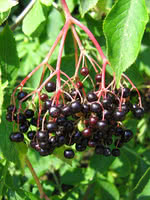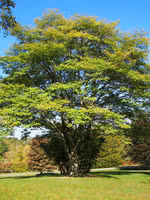Mon-Fri 9am - 5pm Mountain time
Amur Maackia vs Black Elderberry
Sambucus canadensis
Maackia amurensis
NOT AVAILABLE THIS SEASON - MIGHT RETURN
CUSTOM GROW
Black Elderberry is a deciduous shrub native to eastern North America. You can plant this shrub in moist areas and it will help stabilize your soil. You can also use it on rural properties anywhere you'd use a lilac.
Black Elderberries are considered to be partially self-pollinating. So while they will still produce some berries without cross-pollination, planting with another variety will increase yields. Consider planting with Ranch Elderberry or Bob Gordon Elderberry.
Warning: the seeds, stems, leaves, roots, and uncooked berries of the Black Elderberry are poisonous to humans when eaten in quantity. You should cook the berries to make them safe for human consumption.
Amur Maackia is a robust and pretty tree often used for urban decoration and landscaping. This tree has coppery peeling bark that can sometimes resemble lace. Its upright clusters of small white flowers usually bloom in midsummer. Amur Maackia's Small size makes it a great choice for small yards or limited space.
Black Elderberry Quick Facts
Amur Maackia Quick Facts
Toxicity: leaves, stems, and uncooked berries are poisonous to humans

